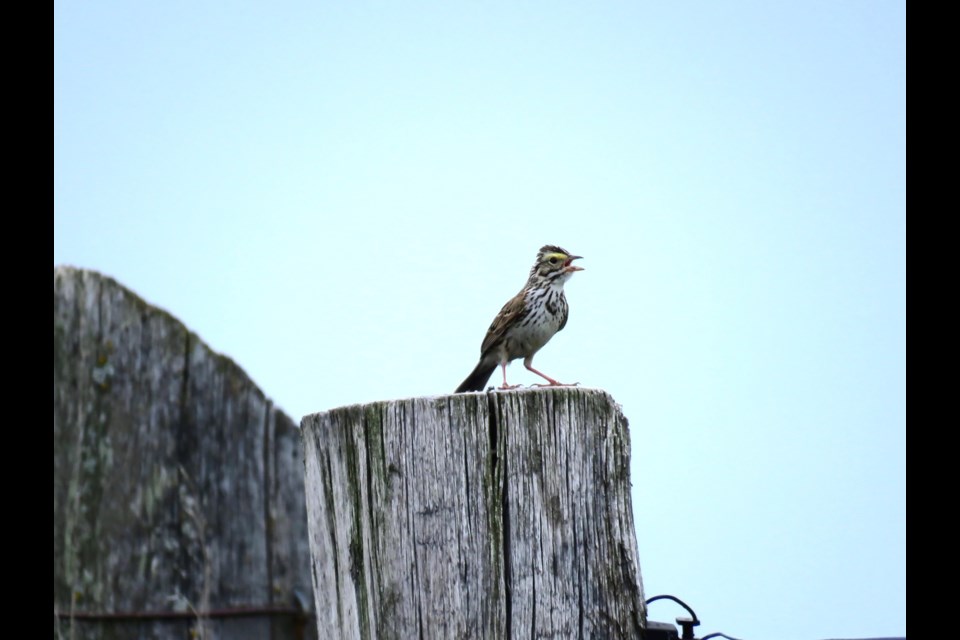Savannah Sparrows are my friends along the way as I walk the laneway from this farm to the farm behind. It’s fun when they dart unexpectedly from the growth on one side or another, run ahead a bit and duck back into the vegetation. Depending where on my walk they appear this can be grass, hay or soybeans. They also hop up and back down a few feet away in a kind of enticement to play hide and seek.
They, like Bobolinks I wrote about a few posts ago, are grassland birds, meaning they live and breed in areas with few trees. In Ontario that includes native meadows, roadside grasses, agricultural pastures and hayfields, old farming fields, prairies and savannahs (savanna). They also live in salt marshes, sedge wetlands, dunes and shores.
Their name and their grassy habitat seem to sync, yet according to allaboutbirds.org, “This species was actually named by famed 19th-century ornithologist Alexander Wilson for a specimen collected in Savannah, Georgia”.
They are among the birds that can benefit farming by eating insect pests. “Their diet includes beetles, grasshoppers, and other bugs, as well as spiders, millipedes, and pillbugs,” says allaboutbirds.org. They also eat grass seeds and some berries.
I am comforted by my research, as I haven’t been able to distinguish significant differences in appearance between males and females. Audubon.org assures me “The Savannah Sparrow often causes confusion for birders because it is so variable.”
As Bobolinks do, the males sit on fence posts and higher grasses to claim their territory and to attract females. I like it when they hop from one fence post to another as I move along the laneway. I suppose their charm is working on my female sensibilities as well.
They are not as randy as Bobolinks tend to be monogamous in northern areas such as Ontario, although they do sometimes have more than one mate in other areas. Both the male and female feed the young. Allaboutbirds.org suggests the shorter breeding season in the north requires more attention in caring for young at the nest.
Savannah Sparrows, like other grassland birds, nest on the ground. Audubon.org says Savannahs’ nests are “usually placed under matted dead plants or under overhanging grass, so that nest can only be approached by a "tunnel" from one side.” The female lays from two-six eggs, and the young leave the nest in eight-11 days after hatching.
Although I enjoy their company on my walks, their “song” is more annoying than melodious. It’s a sort of buzzing cheep that resembles an insect more than a bird.
They sit in small groups sometimes along the wire fencing. When it’s time to migrate they form larger flocks to fly to their southern winter destinations, not dissimilar to Ontarians who, in non-COVID times, flock to warmer climates in the winter.
Rosaleen Egan is a freelance journalist, a storyteller, and a playwright. She blogs on her website rosiewrites.com



